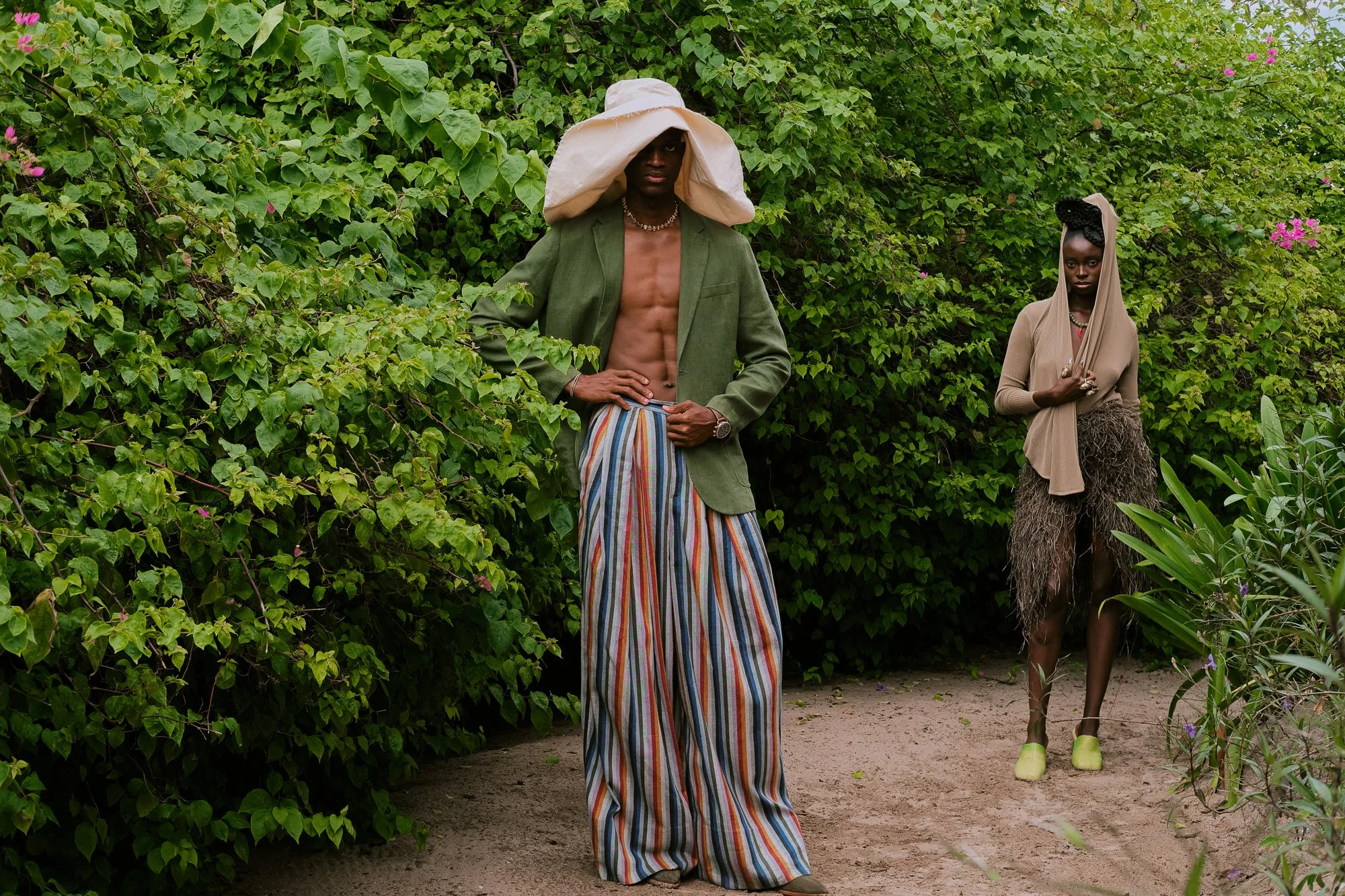Onata Haus Debuts in Lagos, Proving Values Are the New Luxury
The salt-kissed air of Ilashe beach was a living thing, a rhythmic breath that stirred the fringes of Adesola’s dress. She stood slightly apart from the glittering crowd, a silent sentinel as the golden hour began to bleed into the indigo of a Lagos evening. The white, hand-spun cotton of her dress, a piece from kkerelé, felt like a second skin, each swaying fringe catching the dying light. It was a garment that demanded stillness, that told a story of slow, deliberate hands.
This was the heart of Onata Haus. Not just a fashion show, but a séance for the soul of clothing.
Across the sand-scattered runway, a sculpture by Konboye spiralled towards the sky, a beautiful, skeletal Leviathan woven from discarded fishing nets and plastic bottles. It stood in stark, poetic contrast to the elegance of the guests, a silent question hanging in the air: What is the true cost of beauty?
Cassandra Dittmer Nweze, a calm vortex in the centre of the creative storm, watched from the shadows. Her gaze swept over the scene—the convergence of art, environment, and fashion she had meticulously orchestrated. For her, this wasn’t a debut; it was a homecoming. A return to Lagos, the city that pulsed in her blood alongside the beat of Los Angeles, to plant a flag for a new world order. Values as the new luxury.
The first note of the soundtrack, a haunting blend of the kora and a minimalist synth, pulsed through the speakers. The show began.
The models didn’t stride; they flowed. They were a global tapestry of intention. A woman in a sculptured linen jacket from Lukhanyo Mdingi, the fabric the colour of rich earth. A man in the effortless drape of an OpéraSPORT shirt, dyed with organic pigments. The vibrant, geometric knitwear from Ahluwalia told a story of reclaimed textiles, while the sleek, timeless silhouette of a Sami Miro dress spoke of circular design.
Adesola’s breath caught as a model passed in a Cruda Cruda piece, the raw-edged seams and natural dye patterns a love letter to imperfection. She remembered Cassandra’s words during their styling session, booked through the Onata platform. “This isn’t about a trend that will be obsolete in six months,” Cassandra had said, her voice calm and sure over the video call. “This is about collecting pieces that will walk with you through the different seasons of your life. Your closet should be a archive of your evolution, not a landfill of your impulses.”
The finale was not a cacophony, but a crescendo of quiet confidence. The models gathered around Patrick Ozuma’s installation—a series of frames wrapped in vibrant, upcycled fabric scraps that mimicked the iconic Lagos ankara but told a darker, more urgent tale. The message was clear: beauty can be born from what we discard, but the true innovation is to discard less.
Later, as the stars pricked the velvet sky and the sound of the Atlantic provided a constant bassline, Adesola found herself speaking with Cassandra.
“It didn’t feel like a transaction,” Adesola admitted, fingering the fringe of her dress. “It felt like an introduction. To the weaver, to the dyer… to you.”
Cassandra smiled, her eyes reflecting the lantern light. “That’s the connection we’re building. Onata Haus is just the house. The designers are the architects, and you, the wearers, are the life within it. When someone asks you about your dress, you won’t just say a brand name. You’ll have a story.”
Back in her Ikoyi apartment, Adesola navigated to www.onatahaus.com. The digital storefront felt like an extension of the runway—clean, intentional, and deeply human. She clicked on the look she’d loved from Studio Amelia, and instead of just a size chart, she found a profile of the designer, a breakdown of the organic materials, and a link to book another session with Cassandra to see how it would integrate with her existing wardrobe.
This was different. This was a platform that understood that the new bragging rights weren’t a logo, but a legacy. It was a compass pointing towards a future where your closet was not just a collection of clothes, but a collection of values—of craftsmanship, innovation, community, and education.
Adesola added the piece to her cart. She wasn’t just buying a dress. She was investing in a world she wanted to see. And as the confirmation email landed in her inbox, she knew her closet was about to thank her.







































